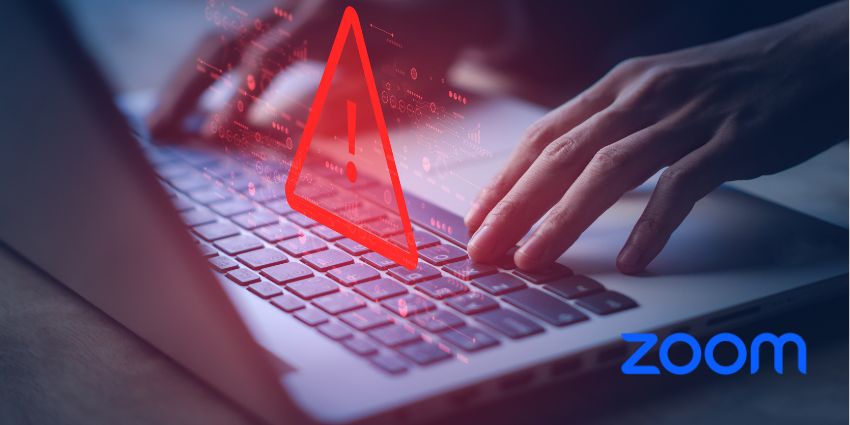With customer care becoming an increasingly important part of a company’s strategy, contact centers are being increasingly scrutinized as a place where a company may be letting recurring revenue fall through the cracks.
Although companies may work on improving agent interaction or processes to avoid long holds. The fact is that your contact center can easily be taken out of operation if it encounters a surge of traffic it hasn’t been tested against.
As it turns out, most organizations are operating contact center systems that have never been truly tested under load.
“In our experience, the first stress test you do – you fail. And that’s by our customer’s standards, not our standards,” Sam Melvin, Co-Founder of Voxology, explained.
This alarming statistic underscores the critical importance of comprehensive stress testing as part of your operational resilience strategy.
But what exactly does effective stress testing entail, and how can organizations implement it to ensure their systems remain robust even during the most demanding periods?
Key Components and Common Vulnerabilities of Stress Testing
Effective stress testing requires a structured approach that targets specific components of your contact center infrastructure.
According to Melvin, comprehensive stress testing should address three critical areas, each with its own common vulnerabilities and failure points.
“If you want to break it down, there’s three broad components that are generally worth testing,” Melvin explained.
“The first would be to test your carrier’s capacity. Are you getting from your carrier the channels that you’re paying for?”
This first layer focuses on carrier capacity, a frequently overlooked vulnerability in contact center infrastructures.
“It’s not uncommon to be paying for more channels than you’re actually getting,” Melvin said.
This discrepancy often goes undetected during normal operations but can become apparent during peak periods.
“We’ll load up a test and you can see it – we’ll get it to 500 channels and every call after starts getting a busy signal,” he explained.
The second critical component involves testing your Interactive Voice Response (IVR) system’s ability to handle incoming call volume.
“The second test is to make sure your IVR is getting you the calls per second that you’re paying for,” Melvin continued.
“So whether that’s a cloud system or something you’ve built and host on your own, the question is, are you able to handle a surge of calls at the rate that you expect?”
The third component dives deeper into the actual customer experience within your contact center system.
“In a third test, you can drill deeper into the IVR and test the actual call flows, the queues, the data dips that happen where you put your account number in before you get to an agent,” Melvin explained.
This layer examines how well your underlying databases and application infrastructure perform when handling authentication, routing, and other data-intensive operations at scale.
At this layer, stress testing often uncovers processing bottlenecks that only appear under heavy load. “Your carrier and IVR are handling the calls per second, but once you get up to 1,000 channels, you’re starting to experience audio issues, sometimes broadly, because your network is not handling it very well,” Melvin noted.
These networking issues between system components can be particularly difficult to diagnose without comprehensive stress testing.
Here’s where one of the most concerning vulnerabilities often appears: unexpected disconnects.
“One of the most common issues we detect after the call gets connected, is an unexpected disconnect,” Melvin said.
“The company’s IVR is talking to you, and the call just drops.”
These issues typically stem from interdependent system components that may function correctly in isolation but fail when working together under load.
“While testing individual components is important, testing your entire UC/CC stack is critical,” Melvin emphasized.
“You can perform load tests on all of them, and they can perform well. For instance, the individual components may all pass a load test, but when you put them together, for some reason, the network between these two can’t hold up.”
By systematically testing these three layers and understanding their common vulnerabilities, organizations can identify and address potential failure points before they impact customer experience during peak periods.
Creating Realistic Test Scenarios to Stress Test
One of the most challenging aspects of effective stress testing is designing scenarios that accurately reflect real-world conditions your contact center might face.
Generic load tests often fail to uncover the specific breaking points in your system that could lead to customer experience failures. To accurately address this, tests should aim to mimic real world situations.
“The way we replicate this real world is we test from the outside in,” Melvin explained.
“We will place synthetic calls into that phone number. This means we can test everything through the PSTN, but also a number of stress tests mostly want to focus on their own infrastructure.”
This approach of testing from the “outside in” is crucial for gaining an accurate picture of how your systems will perform under real-world conditions.
It’s not enough to test individual components in isolation; the entire call flow needs to be tested as an integrated system.
For organizations concerned about accruing charges from their carriers during testing, Melvin notes there are alternatives: “If you’re going to do a series of load tests, you probably don’t want to test your carrier the whole time because you’re going to run up a huge bill with them. So, to bypass that is important.”
As part of their testing process, Voxology will provide SIP endpoint services and can even have someone “send you that hardware or software to hook up” to test your internal infrastructure without incurring substantial carrier fees after validating the carrier’s capacity.
Effective stress testing should also incorporate gradual scaling to identify precise breaking points.
“To effectively do it, we could say ‘let’s start with 100 and see how it works. Let’s move it up to 500.’ Then we can look at if everything is functioning well,” Melvin illustrated.
“These are live, like you’re on a conference call with all the key people to be able to control these things and turn them up or turn them down or restart tests.”
Most importantly, stress tests should push beyond your expected peak capacity to understand how systems degrade under extreme load.
“Many customers will test beyond what their objectives are to see what happens,” Melvin said.
“That allows them to determine how they would handle a situation where that could occur.”
This approach helps organizations design effective fallback mechanisms, such as customized messaging when capacity is exceeded.
Voxology’s Approach to Ensuring Robust Contact Centers
When it comes to implementing effective stress testing strategies, organizations need partners with both the technical capabilities and industry expertise to conduct comprehensive evaluations.
This is where specialized testing services like Voxology offer significant advantages over attempting to build in-house testing capabilities.
“We’re system agnostic,” Melvin explained about Voxology’s approach. “It doesn’t matter if you’re an amalgamation of all kinds of different stuff that you’ve collected over the years, or you’re fully up on Teams. We don’t care because we’re an outside in organization.”
This system-agnostic approach is particularly valuable in today’s diverse contact center technology landscape, where organizations often operate hybrid environments with components from multiple vendors.
Voxology’s ability to test regardless of underlying technology ensures that no potential vulnerabilities are missed.
Beyond technology compatibility, specialized stress testing brings industry expertise that can be invaluable in interpreting results.
“Our team’s experience, testing the largest call centers and IVRs in the world for more than 20 years is also incredibly valuable,” noted Melvin. “There is something with regards to the customer experience for our customers with our knowledge and what we’ve seen of how things fail.”
The scale of testing capabilities also matters significantly when working with large enterprise contact centers.
“We’ve done stress tests at 30,000 channels or more,” Melvin states, highlighting Voxology’s ability to handle even the most demanding enterprise testing scenarios.
Perhaps most importantly, comprehensive stress testing services provide detailed insights that help organizations not just identify problems but understand how to fix them.
“We record every call. And that allows us to go back and see anomalies and actually help the customer understand what’s happening on that call and what it sounds like,” Melvin explained.
This level of analysis helps transform stress testing from a simple pass/fail exercise into a strategic tool for continuous improvement.
“We might run a stress test, identify an issue, and then they might optimize that query and then want to run it again to see how it performs,” Melvin said.
“It’s not always just a one test and here’s all the issues. Sometimes you press up against an issue that you’ve got to resolve before you push up against the next one to get your full capacity.”
Making Stress Testing a Strategic Priority
In today’s customer-centric business environment, contact center reliability isn’t optional; it’s essential for maintaining customer loyalty and protecting recurring revenue. Therefore, stress testing is vital.
But as evidenced above, stress testing must be viewed not as an occasional technical exercise but as a strategic business priority.
“What regular stress tests do is free up the team to be able to make important changes and updates and upgrades to the system with confidence,” Melvin explained.
This confidence is particularly crucial as organizations continue to modernize their contact center infrastructure.
By implementing a systematic approach to contact center stress testing that examines carrier capacity, IVR performance, and end-to-end call flows, organizations can ensure their systems remain resilient even during the most demanding periods and regardless of carrier changes.
With Voxology as your partner, stress testing becomes more than a checkbox-it becomes your secret weapon for staying ahead of the competition with your customer service.







